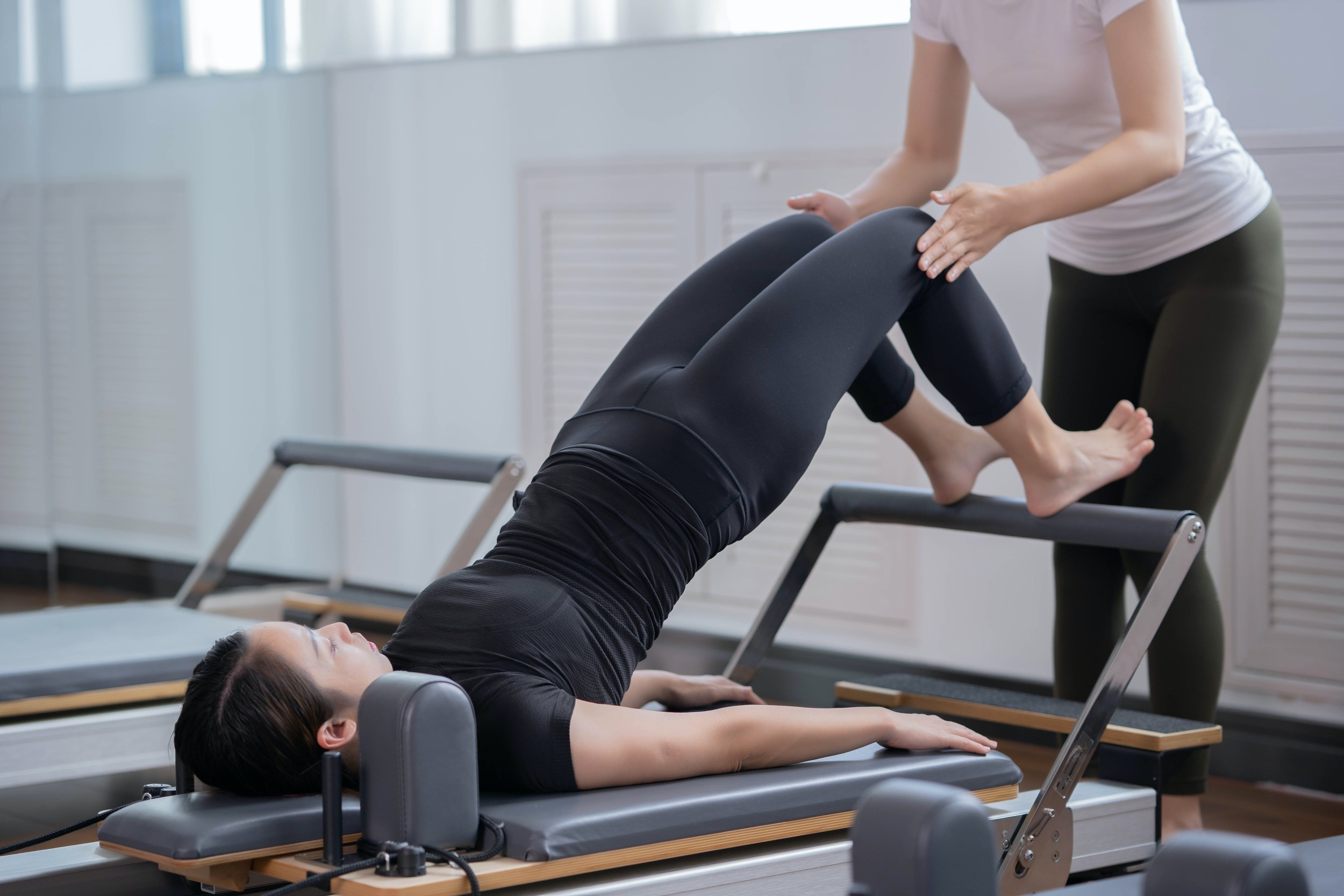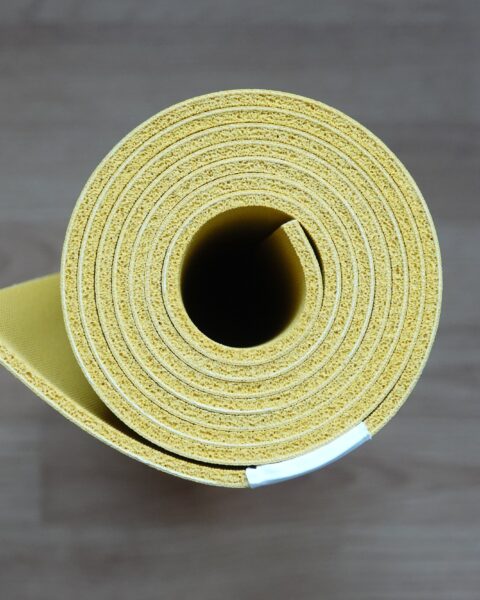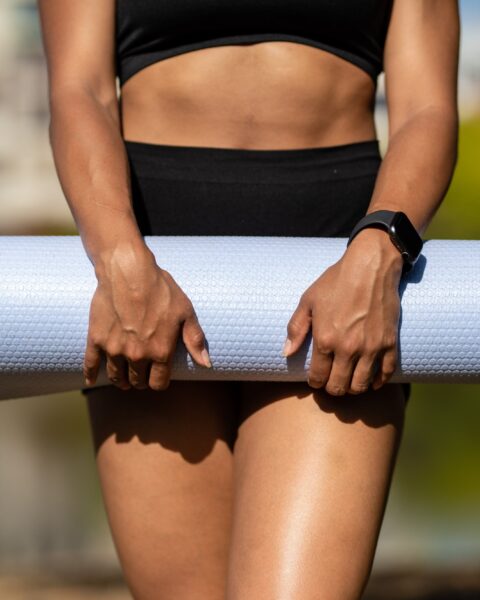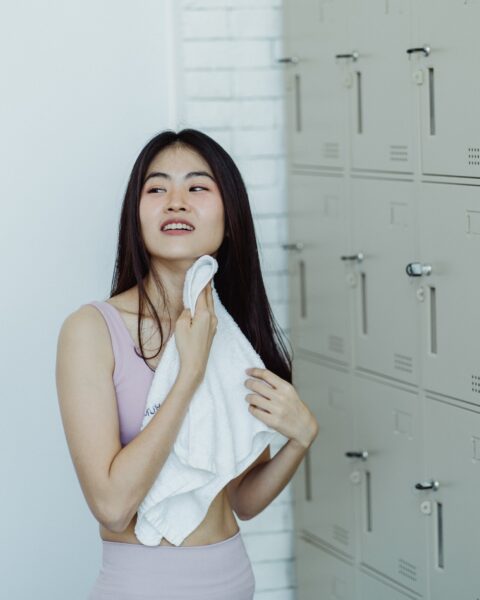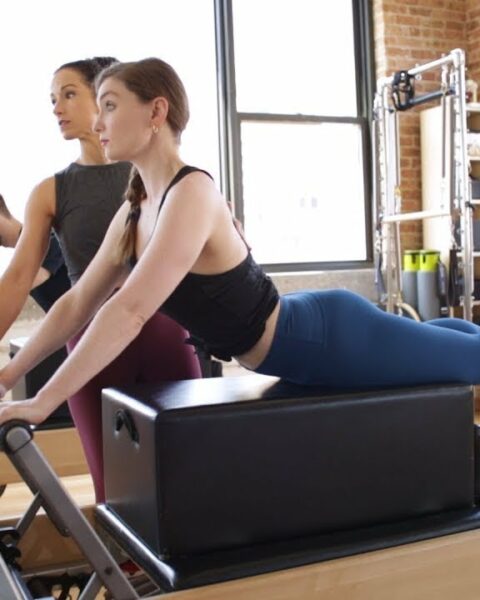In this article, we will explore the key differences between Pilates mat vs reformer and provide you with eight must-know facts to help you make an informed choice.
Pilates Mat Vs Reformer: 8 Key Differences
Introduction
Before we dive into the specifics, let’s first understand what mat and reformer Pilates entail. Mat Pilates involves performing a series of exercises on a firm yet cushioned mat using your own body weight for resistance, and the exercises typically focus on core strength, stability, and alignment. Mat Pilates exercises can be modified to suit different fitness levels, making them accessible to beginners as well as advanced practitioners. The mat itself provides a stable surface for performing various movements, such as rolling, stretching, and balancing.
On the other hand, reformer Pilates involves using a specially designed machine called a reformer, which utilizes springs, ropes, and pulleys to provide resistance. This machine is known for its versatility in targeting different muscle groups and challenging the body in unique ways.
The Pilates reformer machine consists of a sliding carriage, adjustable springs, and various attachments, allowing for a wide range of exercises to be performed. The resistance provided by the springs can be adjusted to accommodate different fitness levels and goals. This makes reformer Pilates suitable for individuals recovering from injuries, athletes looking to enhance their performance, and anyone seeking a full-body workout.
Reformer Pilates offers numerous benefits, including improved posture, increased muscular strength, enhanced flexibility, and better body alignment. The machine provides support and assistance, making it easier to perform certain movements while still challenging the muscles effectively.
Both mat Pilates and reformer offer unique advantages and can be incorporated into a well-rounded fitness routine. Whether you prefer the simplicity and convenience of mat Pilates or the versatility and resistance of the reformer, Pilates can help you achieve a stronger, more balanced body.
The Birth of Pilates
Pilates, created by Joseph Pilates in the early 20th century, was initially developed as a rehabilitation method. It gained popularity due to its effectiveness in improving strength, flexibility, and overall fitness. Both mat and reformer Pilates draw inspiration from Pilates’ original teachings.
Joseph Pilates, born in Germany in 1883, was a sickly child who suffered from asthma, rickets, and rheumatic fever. Determined to overcome his physical limitations, he dedicated his life to studying various exercise methods and disciplines, including yoga, martial arts, and gymnastics. Through his extensive research and personal experimentation, Pilates developed a unique system of exercises that aimed to strengthen the mind and body.
During World War I, Pilates was interned in a British camp along with other German nationals. It was during this time that he began refining his exercise method, using bed springs and other materials to create resistance and assist in the rehabilitation of injured soldiers. This marked the birth of what is now known as the Pilates reformer, a versatile piece of equipment that allows for a wide range of exercises.
After the war, Pilates moved to New York City, where he opened a studio and began teaching his method to dancers, athletes, and individuals seeking to improve their physical well-being. His unique approach to exercise quickly gained popularity, attracting clients from all walks of life. Pilates’ method focused on core strength, proper alignment, and controlled movements, emphasizing the mind-body connection.
Over the years, Pilates’ method continued to evolve and adapt to the needs of his clients. He developed a series of exercises that could be performed on a mat, making his method accessible to a wider audience. The mat exercises, often referred to as “classical Pilates,” require no equipment and can be practiced anywhere, making them a convenient option for individuals seeking to incorporate Pilates into their daily routine.
Today, Pilates is practiced worldwide and has become a staple in the fitness industry. It is known for its ability to improve posture, increase flexibility, and build long, lean muscles. Pilates studios offer a variety of classes, ranging from beginner to advanced, and often incorporate props such as resistance bands, stability balls, and foam rollers to enhance the workout experience.
Pilates’ legacy lives on through the countless individuals who continue to benefit from his method. Whether you’re a professional athlete looking to enhance your performance, a dancer seeking to improve your technique, or simply someone who wants to improve their overall fitness, Pilates offers a holistic approach to exercise that can transform your body and mind.
Fact 1: Basics of Reformer and Mat Pilates
When it comes to mastering the basics of Pilates, mat exercises are often recommended for beginners. Mat Pilates allows you to focus on your body’s alignment and movement patterns without the added complexity of the reformer. It allows you to develop a strong foundation before progressing to more advanced mat classes.
Fact 2: Equipment and Setup
In mat Pilates, all you need is a comfortable mat and enough space to move freely. It’s a convenient option for those who prefer to work out at home or have limited access to equipment. On the other hand, reformer Pilates requires a specialized machine that provides adjustable resistance and support. It is often available in Pilates studios or fitness centers.
Fact 3: Targeted Muscle Groups
Both versions of Pilates engage multiple muscle groups, including the core muscles, glutes, arms, and legs. However, reformer exercises offer more variety in terms of targeting specific muscle groups due to the machine’s versatility. With the reformer, you can easily adjust the resistance and angle of the exercises to focus on different muscle groups.
Fact 4: Accessibility and Space Requirements
If you are concerned about accessibility or have limited mobility, mat Pilates may be the more suitable option for you. Since it only requires a mat, you can do a mat workout anywhere, even in the comfort of your own home. On the other hand, reformer Pilates may require more space and accessibility to the reformer machine, which may not be feasible for everyone.
Fact 5: Intensity Levels and Scalability
Both mat pilates and reformer offer opportunities for progression and can be tailored to different fitness levels. Mat Pilates exercises can be modified by adjusting the difficulty levels, repetitions, or incorporating props. Similarly, the reformer allows you to adjust the resistance and tension to match your fitness level and gradually increase the intensity of your workout.
Fact 6: Injury Prevention and Rehabilitation
Pilates, in general, is known for its emphasis on core stability and correct alignment, which can help prevent injuries and promote better posture. However, the reformer machine provides additional support and assistance, making it a preferred choice for individuals recovering from injuries or those with specific rehabilitation needs.
Fact 7: Cost Implication
When it comes to cost, mat Pilates is generally more affordable as it doesn’t require any expensive equipment. You can simply invest in a high-quality mat and follow online tutorials or join affordable group classes. On the other hand, reformer Pilates may involve higher costs as it requires access to a reformer machine, either through studio sessions or purchasing your own machine.
Fact 8: Versatility and Variation
While mat Pilates offers a wide range of exercises, reformer Pilates provides even greater versatility and variation. The reformer machine allows for a more dynamic and challenging workout experience, with the ability to perform exercises in various positions, such as lying down, standing, or sitting. This variety can help prevent workout plateaus and keep you motivated.
Making the Choice: Mat Pilates vs Reformer?
Ultimately, the choice between mat and reformer Pilates depends on your preferences, fitness goals, accessibility, and budget. If you enjoy the convenience of practicing at home with minimal equipment and prefer a low-impact workout, mat Pilates may be your best bet. On the other hand, if you crave variety, enjoy the support of a machine, and are willing to invest in specialized equipment or studio sessions, reformer Pilates might be the perfect fit for you.
Conclusion
Regardless of whether you choose Pilates mat work or reformer Pilates, both methods offer immense benefits for your overall fitness and well-being. The key is to find a form of Pilates that aligns with your goals, preferences, and lifestyle. So, whether you prefer the simplicity of mat classes or the versatility of reformer Pilates classes, get ready to strengthen your core, improve your flexibility, and embark on a Pilates journey that suits you best.
FAQs
1. 1. Is Pilates suitable for beginners?
Yes, Pilates is suitable for beginners. Both mat and reformer Pilates offer options for individuals at different fitness levels, and instructors can provide modifications to accommodate beginners.
3. 2. Which one is better for weight loss, mat or reformer Pilates?
Both reformer and mat Pilates can contribute to weight loss when combined with a healthy diet and consistent Pilates practice. The intensity and duration of your workouts, as well as your overall lifestyle choices, play a significant role in weight loss.
5. 3. Can I practice both mat and reformer Pilates?
Absolutely! Many individuals enjoy the benefits of practicing both reformer and Pilates. This allows for diversity in your workouts and the opportunity to target different muscle groups.
7. 4. What should I wear for a Pilates class?
Wear comfortable, form-fitting clothing that allows you to move freely. Avoid clothing that is too loose or may get caught in the Pilates equipment.
9. 5. Are Pilates classes expensive?
The cost of a Pilates class may vary depending on factors such as location, Pilates studio, instructor experience, and the type of Pilates class (group or private). A mat Pilates class tends to often be more affordable compared to a reformer Pilates class.
